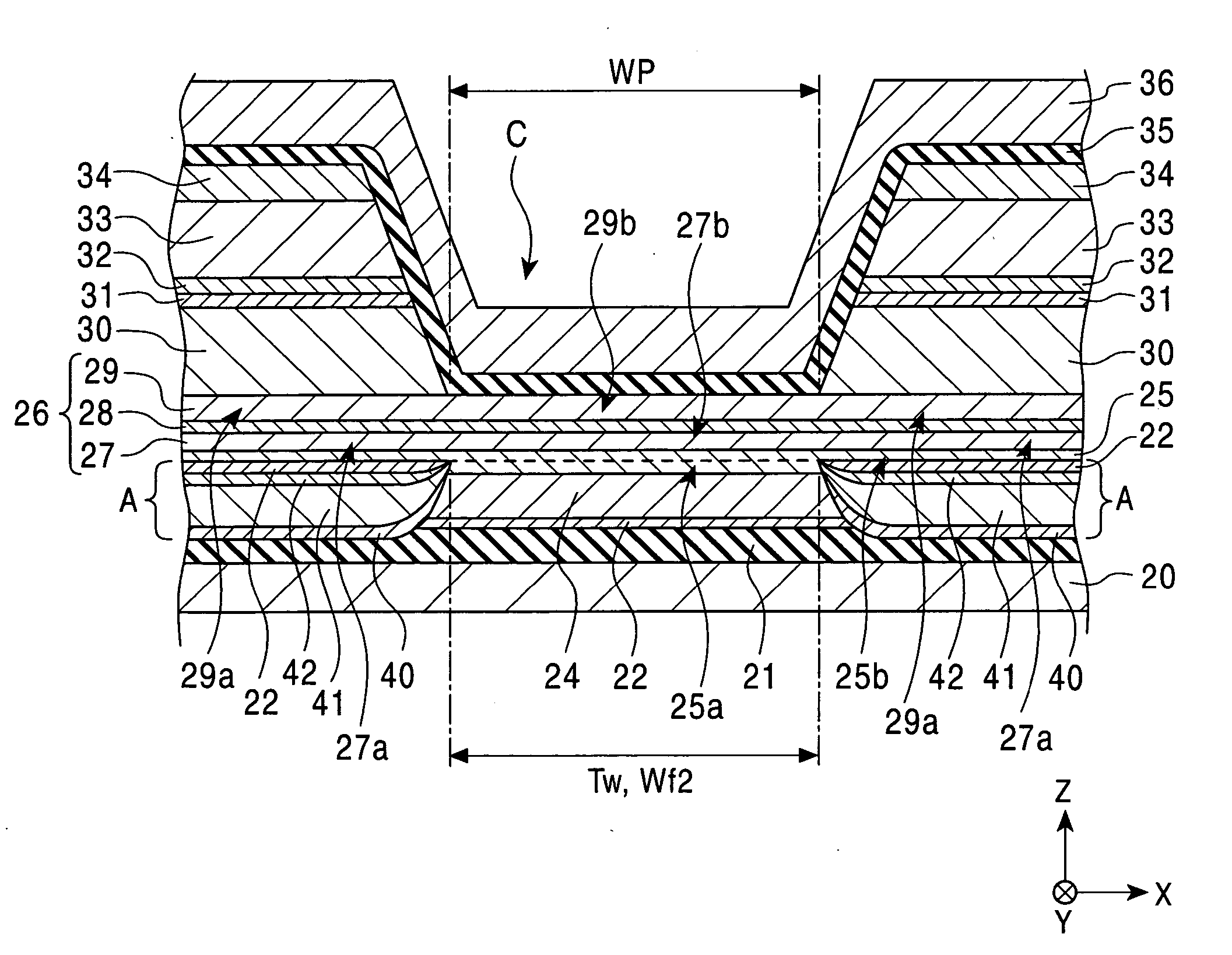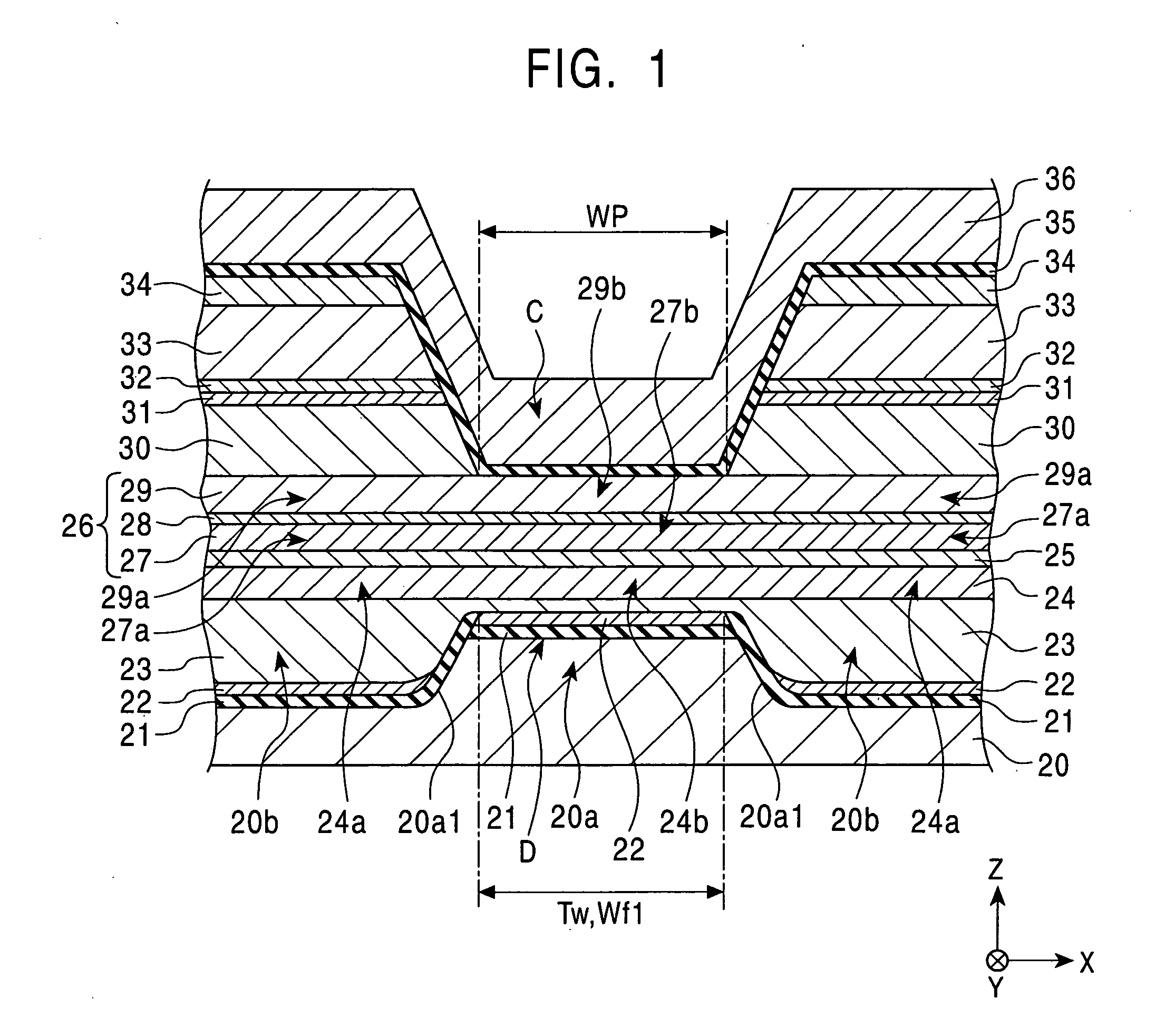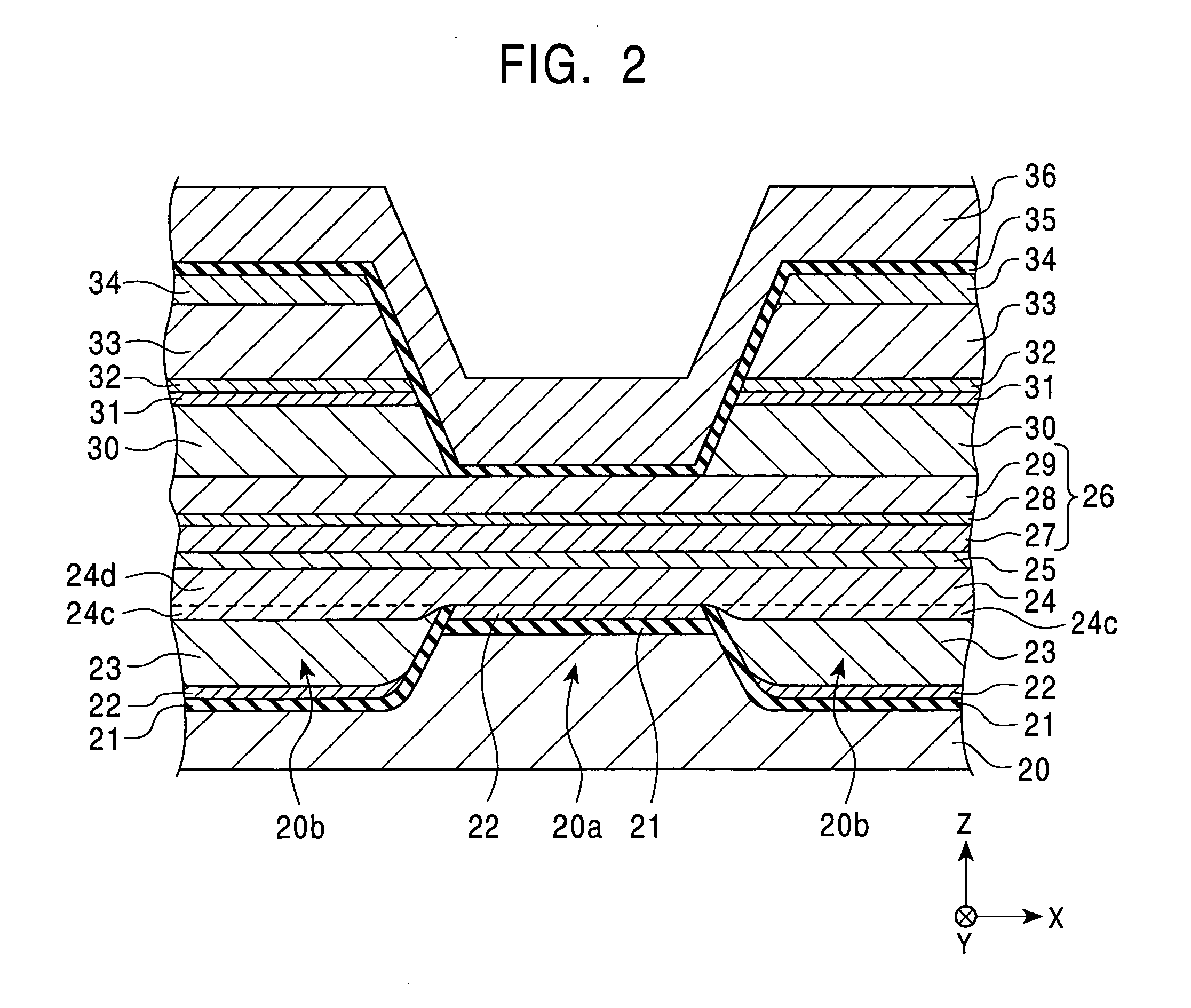Magnetic detecting element having antiferromagnetic film having predetermined space in track width direction and method for manufacturing the same
a technology of antiferromagnetic film and magnetic detecting element, which is applied in the field of magnetic detecting element, can solve the problems of increasing the significance of the decrease in the reproduction output, the current loss, and the decrease of the reproduction output, and achieve the effect of improving the reproduction outpu
- Summary
- Abstract
- Description
- Claims
- Application Information
AI Technical Summary
Benefits of technology
Problems solved by technology
Method used
Image
Examples
examples
[0421] The magnetic detecting elements having the structures shown in FIGS. 50 (Example) and 53 (Comparative Example), respectively, were used for determining unidirectional exchange bias magnetic field Hex* and reproduction output (normalized output).
[0422]FIG. 50 (Example) is a schematic drawing showing a partial section of the magnetic detecting element, as viewed from a surface facing a recording medium. In FIG. 50, a film structure comprises a seed layer: (Ni0.8Fe0.2)60at %Cr40at % (60 Å) / a free magnetic layer: Ni80at %Fe20at % (35 Å) / CO90at %Fe10at % (10 Å) / a nonmagnetic material layer: Cu (21 Å) / a pinned magnetic layer: [second magnetic layer: CO90at %Fe10at % (X Å) / nonmagnetic intermediate layer: Ru (9 Å) / first magnetic layer: CO90at %Fe10at % (Y Å)] / a first antiferromagnetic layer: Pt50at %Mn50at % (200 Å). In this structure, a value in parentheses shows the thickness of each layer. As shown in FIG. 50, magnetization of the free magnetic layer is oriented in the track widt...
PUM
 Login to View More
Login to View More Abstract
Description
Claims
Application Information
 Login to View More
Login to View More - R&D
- Intellectual Property
- Life Sciences
- Materials
- Tech Scout
- Unparalleled Data Quality
- Higher Quality Content
- 60% Fewer Hallucinations
Browse by: Latest US Patents, China's latest patents, Technical Efficacy Thesaurus, Application Domain, Technology Topic, Popular Technical Reports.
© 2025 PatSnap. All rights reserved.Legal|Privacy policy|Modern Slavery Act Transparency Statement|Sitemap|About US| Contact US: help@patsnap.com



